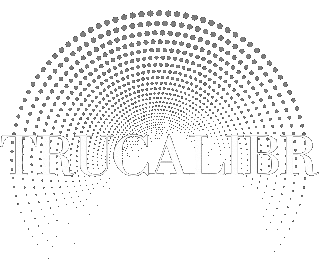Table of Contents
- Introduction
- Cultivating Attention and Focus
- Effective Strategies for Encoding Information
- Powerful Retrieval Techniques
- Additional Resources and Further Reading
- Practical Tips and Actionable Advice
- Conclusion
Introduction
The ability to effectively absorb and retain information has become an invaluable skill. Whether you’re a student striving for academic success, a professional seeking to stay ahead in your field, or simply someone with a thirst for knowledge, mastering information absorption and retention can unlock a world of opportunities.
However, the sheer volume of information we encounter on a daily basis can often feel overwhelming, and it’s not uncommon to find yourself struggling to retain what you’ve learned. That’s where understanding the science behind information absorption and retention becomes crucial.
Imagine being able to effortlessly absorb and retain vast amounts of information, from complex theories to intricate details, unlocking a newfound confidence and competence in your personal and professional endeavors. This article will serve as your guide, providing you with the knowledge and strategies to maximize your brain’s potential and become a true master of information absorption and retention.
Cultivating Attention and Focus
Before you can effectively absorb and retain information, you must first cultivate a state of focused attention. In our modern world, where distractions abound, maintaining focus can be a significant challenge. However, developing strategies to minimize distractions and enhance your ability to concentrate is essential for optimal information absorption.
One key strategy is to create a conducive environment for learning. This may involve finding a quiet space, minimizing external stimuli (such as notifications or background noise), and establishing routines or rituals that signal to your brain that it’s time to focus.
Additionally, practicing mindfulness and meditation techniques can help train your brain to stay present and attentive. Research has shown that regular meditation can improve focus, increase attention span, and enhance overall cognitive function.
Effective Strategies for Encoding Information
Once you’ve established a state of focused attention, the next step is to effectively encode the information you’re trying to absorb. Encoding refers to the process by which information is initially processed and converted into a form that can be stored in memory.
One powerful encoding strategy is the use of active learning techniques, such as taking notes, summarizing key points, or teaching the material to someone else. By actively engaging with the information, you increase the likelihood of it being encoded into your long-term memory.
Another effective approach is to leverage the power of visual aids and multimedia. Our brains are wired to process visual information more efficiently than text alone, so incorporating diagrams, charts, or videos can greatly enhance information absorption and retention.
Additionally, connecting new information to existing knowledge or personal experiences can facilitate deeper understanding and make the information more meaningful and memorable.
Powerful Retrieval Techniques
While encoding information is crucial, the ability to effectively retrieve and apply that information is equally important. Retrieval refers to the process of accessing and recalling information from memory when needed.
One powerful retrieval technique is known as spaced repetition. This involves reviewing and reinforcing information at specific intervals, rather than trying to cram everything at once. By spacing out your learning, you can solidify the information in your memory and make it more accessible for future retrieval.
Another effective strategy is the use of mnemonic devices, such as acronyms, rhymes, or visual associations. These techniques leverage our brain’s natural tendencies to remember patterns, stories, and visual cues, making it easier to recall specific pieces of information.
Additionally, practicing active recall through quizzing, problem-solving, or teaching can strengthen the neural pathways associated with the information, reinforcing its retention and making it more readily available for future use.

Additional Resources and Further Reading
For those interested in exploring the topic of information absorption and retention further, here are some recommended resources:
- “Make It Stick” by Peter C. Brown, Henry L. Roediger III, and Mark A. McDaniel – A comprehensive guide to effective learning and memory techniques, backed by scientific research.
- “Moonwalking with Einstein” by Joshua Foer – A captivating exploration of the art and science of memory, featuring techniques used by memory champions.
- “The Mind Map Book” by Tony Buzan – An introduction to the powerful technique of mind mapping, a visual tool for organizing and retaining information.
Frequently Asked Questions
Q: Is it possible to improve my memory and information retention skills?
A: Absolutely! While some individuals may have a natural advantage in terms of memory capacity, information absorption and retention are skills that can be developed and improved with practice and the right strategies.
Q: How can I overcome the forgetting curve and retain information for the long term?
A: The forgetting curve refers to the tendency to forget information over time if it is not reviewed or reinforced. To overcome this, it’s essential to employ strategies like spaced repetition, active recall, and connecting new information to existing knowledge, which can help solidify the information in your long-term memory.
Practical Tips and Actionable Advice
Mastering information absorption and retention is a journey that requires dedication and the implementation of effective strategies. Here are some practical tips and actionable advice to help you unlock your brain’s full potential:
- Create a conducive learning environment: Minimize distractions, find a quiet space, and establish routines or rituals that signal to your brain that it’s time to focus.
- Practice active learning techniques: Take notes, summarize key points, teach the material to others, or create visual aids to actively engage with the information.
- Leverage spaced repetition: Review and reinforce information at specific intervals, rather than trying to cram everything at once. This can help solidify the information in your memory.
- Utilize mnemonic devices: Incorporate acronyms, rhymes, or visual associations to leverage your brain’s natural tendencies for remembering patterns, stories, and visual cues.
- Practice active recall: Regularly quiz yourself, solve problems, or teach the material to others to strengthen the neural pathways associated with the information.
- Connect new information to existing knowledge: Relate new concepts to your personal experiences or existing knowledge to create meaningful connections and facilitate deeper understanding.
Real-World Example
Sarah, a medical student, had always struggled with retaining the vast amount of information she needed to learn for her courses and exams. Despite hours of studying, she often found herself forgetting crucial details or feeling overwhelmed by the sheer volume of material.
After reading about effective information absorption and retention strategies, Sarah decided to implement a comprehensive approach. First, she created a dedicated study space in her apartment, free from distractions like television or social media. She also started incorporating active learning techniques, such as creating mind maps and summarizing key concepts in her own words.
To reinforce her learning, Sarah implemented a spaced repetition system, reviewing her notes and flashcards at specific intervals, rather than trying to cram everything the night before an exam. She also utilized mnemonic devices, like acronyms and visual associations, to help retain complex medical terminology and processes.
Additionally, Sarah made sure to prioritize self-care by getting enough sleep, exercising regularly, and practicing mindfulness techniques to manage stress and improve her focus.
By consistently applying these strategies, Sarah noticed a significant improvement in her ability to absorb and retain information. Her grades improved, and she felt more confident in her understanding of the material. Most importantly, she developed a sustainable approach to learning that would serve her well throughout her medical career.
Conclusion
In today’s information-rich world, the ability to effectively absorb and retain information has become an invaluable skill. By understanding the science behind attention, encoding, and retrieval, and implementing effective strategies, you can unlock your brain’s full potential and become a true master of information absorption and retention.
Remember, mastering this skill is not just about academic or professional success; it’s about empowering yourself with knowledge, broadening your horizons, and unlocking new opportunities for personal growth and fulfillment.
Embrace the journey, and let this article serve as your guide, providing you with the tools and insights to transform the way you approach learning and knowledge acquisition. With dedication and perseverance, you can become a lifelong learner, continuously expanding your understanding and enriching your life with the power of information.

